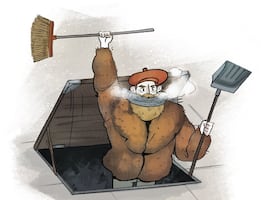By Giselle Rodríguez
The dead were celebrated in Mexico well before the Spanish conquest in 1542. Mexicas, Mayans, Purepechas and Totonacans all held ceremonies to celebrate the life of their ancestors. However, the mix of European and native traditions gave rise to what is today known as the celebration of the Day of the Dead.
The declaration of the "Día de Muertos" as intangible cultural heritage by UNESCO in November 7, 2003 stated that “this annual meeting between people and their ancestors has the social duty of reminding the place that the deceased held in the group and contributes to strengthen cultural identity.”
The celebration, held on November 1, starts when a relative lits the candles on the altar while whispering the name of the deceased. The altar includes orange and purple cempasúchil flowers (tagetes recta), papel picado – a decorative craft made out of paper cut into elaborate designs-, pan de muerto – a special kind of bread that has the shape of a pile of bones topped by a skull-, sugar skulls, a photo of the deceased and even the dishes and drinks that they enjoyed while still alive.
One the best places to experience this celebration in Mexico City is the Panteón de Dolores, the largest cemetery in the country. Located on Constituyentes Avenue, the history of the place goes back to 1870, when Juan Manuel Benfield, owner of El Rancho de Coscoacoaco, set aside an area to found a cemetery. Today it houses around 700,000 tombs, among them the graves of three former presidents, many heroes from the Mexican Revolution, writers, artists and scientists.
A big and colorful traditional altar is placed at the entrance of the cemetery. Mexican families come to spend time with their dead, some of them drink, eat and play cards on the tombs while others hire musicians to play in front of the grave. Others simply clean and decorate the funeral slab and pray for their dead while children play around, many of them wearing a Halloween custome. Some gates and spots of the cemetery are decorated with designs made of petal flowers, adding color to the celebration.
Noticias según tus intereses
[Publicidad]
[Publicidad]














